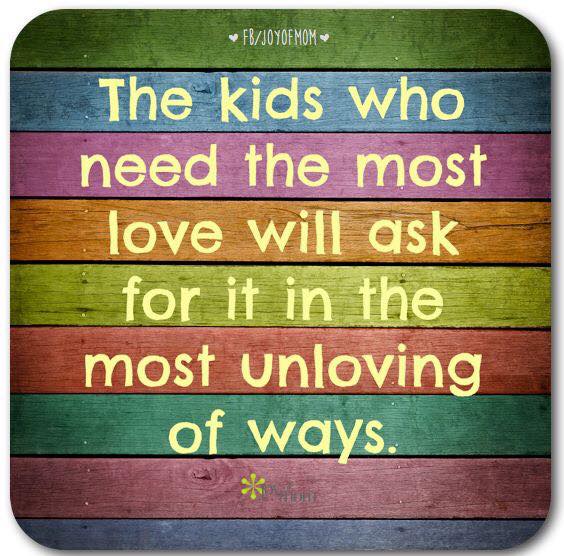The ministry team at our church asked me to share a list of things I observe as trauma triggers in The Princess and Youngest Son, and to also list things I’ve observed as trauma triggers in other adopted children. Below is the list I gave them. (I didn’t want to overwhelm them with too many things all at once.)
I'm posting the list here so others can refer to it. You may want to share this with a teacher friend, or youth ministry team leader you know. Perhaps, you’ll add some things of your own to this list in the comment section for this post. I will add some myself with an (*) after the list I gave our ministry team.
Universal Trauma Triggers (things I’ve seen most internationally adopted kids, and many foster/adopt kids react to on some level)
Blood, gore, dead babies, dead animals, dying people, people starving in Africa (pretty much any topic you THINK they SHOULD know about should really be discussed with the parents of traumatized kids first).
Orphan care ministry (triggers survivor’s guilt).
Talk about the “blessing” of adoption (triggers guilt for caring about bio family).
Movies about adoption, movies where adoptive parents are portrayed as evil or mean, movies about orphanages, child trafficking, sex trafficking, child abandonment. (Parent permission before showing movies might be a good standard practice in children’s and youth ministry.)
Talk about a child being adopted – even if everyone already knows it. Adopted kids don’t want to be the topic of discussion; they just want to fit in
Loud noises, alarms, sudden changes, changes in routine, new teachers/leadership can also be triggers for many adopted kids.
Do not assume adopted kids, especially older, internationally adopted kids that lived in orphanages, know what you’re talking about. Their world knowledge is VERY limited and it will take significant time to “catch up” on things most people would think “everyone” knows.
*Holidays, especially Halloween and Christmas. Birthdays, pretty much any celebration, especially if it isn’t all about them.
*Too much “stuff.” Our kids are overwhelmed with too many choices – everything from a full menu at a restaurant, to too many clothing choices, and too many toys.
*Affection from people other than family members.
*Gifts – even little gifts like a piece of candy.
*Rewards – especially if they’re for doing something any well-behaved kid SHOULD be doing anyway.
Triggers more specific to Youngest Son and The Princess (but can also be triggers for other adopted kids, too):
Talk about suicide, especially suicide by hanging.
Talk about alcoholism, prostitution, divorce.
Talk about their birth country.
When people ask them what their “actual name” is – yes, this has happened in youth group. Their “actual” names are the names they have now.
Questions about their orphanage or their life in Eastern Europe, including questions about their birth family. (Youth group members need to learn this is inappropriate conversation.)
Certain smells can be triggers, including fish, fried potatoes, and anything burned.
Questions about therapy or medications.
People assuming they know what is being talked about – for example, The Princess became very upset about hearing one of the youth leaders had a miscarriage – not because she understood what that was, but because she felt stupid, and like “everyone was talking in jibberish.”
*When one of our older boys comes home to visit. (It messes with routine, territory, and attention issues.)
*Any new recipes Mama T tries for supper.
*Painting the house, or moving the furniture.
*Other kids not having coats on when it’s cold outside.
*People leaving their animals outdoors.
*When a child is being publicly disrespectful – like in a store.

 RSS Feed
RSS Feed